
New
Build a workout routine for your personal fitness level and goals
Create a personalized workout plan using Gym Geek’s new AI tool. Gym Geek AI can generate a single workout or a structured routine for any fitness goal.
Powered by
Our Bodyweight At Home Workout for Beginners is a 3 day a week routine that needs no special equipment and can be done from anywhere. Try this routine for 4-6 weeks to build foundational strength and endurance.
Exercises that use your own bodyweight and require little equipment are known as calisthenics exercises. Our routine is built out of these exercises, split into a full body workout, upper body focused workout and a lower body focused workout.
The general style of this workout routine is to perform a series of exercises in circuits, so you complete all the exercises from top to bottom, before starting again with the first exercise. Start with 1 circuit each day and try to work up to 3 by the end of 6 weeks.
Full body at home workout
This at home workout consists of three days per week of full body exercise. A full body workout is a great way to target all your major muscle groups and is a good way to build up foundational strength and a basic level of fitness.
The second and third days of this routine are also full body workouts, but place a slight focus on upper and lower body, respectively.
We recommend beginner trainees start exercising 2-3 times per week. Exercising more often than this can be too intensive, and you may find it overwhelming.
If you train more than 3 times per week, you should not use a full body workout. Why? Simply because you need to allow 48 hours of rest between working the same muscle groups again. This allows enough time for muscle repair and growth.
When you eventually look to train 5-6 days per week, you will need to choose a split workout routine like an upper-lower split or push-pull-legs (PPL) split.
Muscle groups
The Bodyweight At Home Workout for Beginners workout routine targets the following muscle groups:
Chest muscles
The biggest muscles in your chest are the pectoralis major and pectoralis minor, together known as “pecs”.
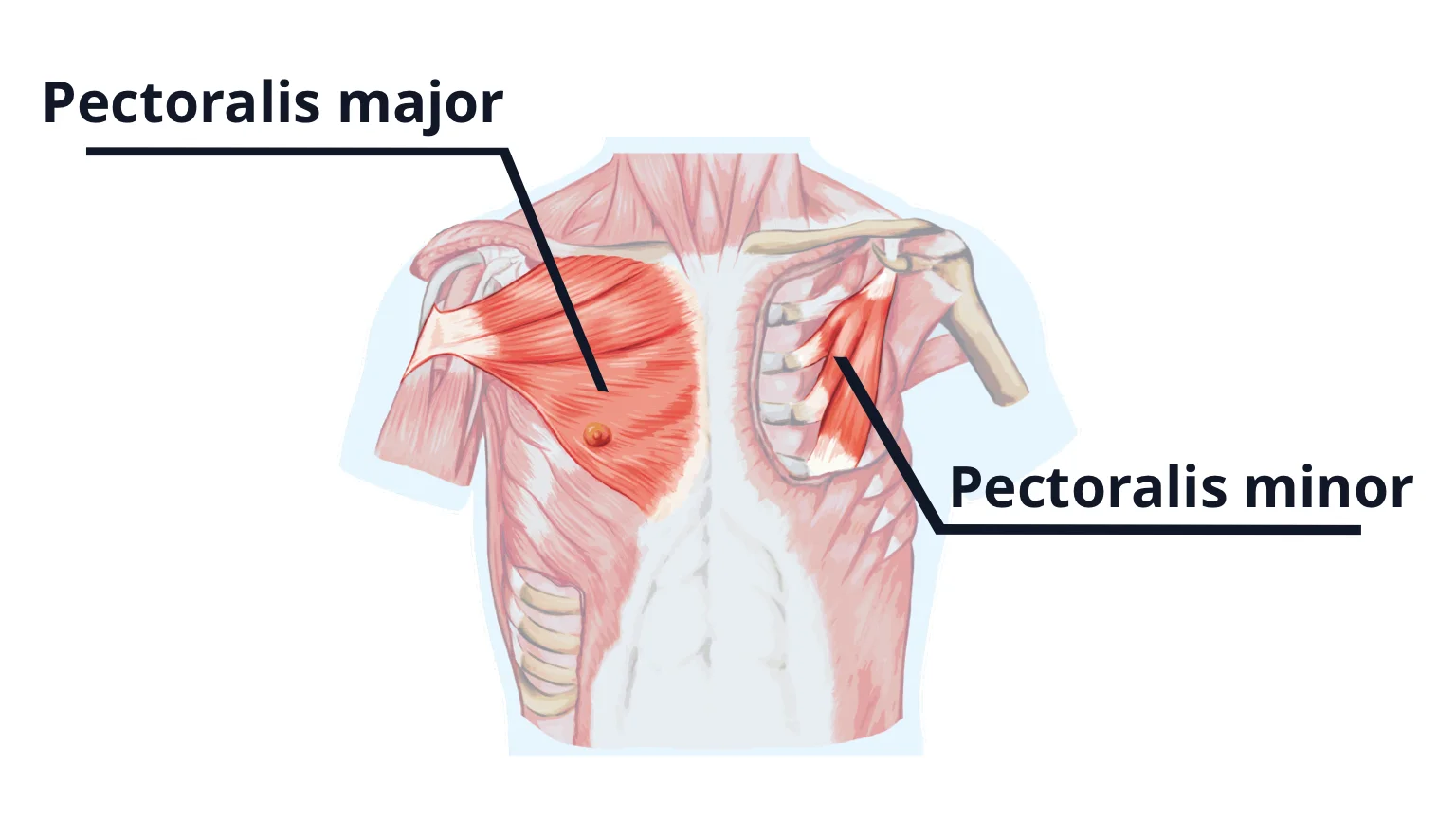
Your pectoralis major is a large, fan-shaped muscle that covers your upper chest. It’s responsible for movements like pushing and pressing.
The pectoralis minor is the smaller muscle and situated below your pectoralis major. It plays a key role in the movement and stabilization of your shoulder blades.
At home bodyweight exercises that target your chest include:
Back muscles
There are three primary muscles in your back: the latissimus dorsi (lats), rhomboids and trapezius (traps) muscles.

Your lats are the largest muscles in your back and give your back the distinctive “V-shape”. They are involved in pulling movements, engaging when you pull a weight towards your body (or lift your body up towards a bar).
The rhomboids are located between your shoulder blades. Your rhomboids are crucial for upper back stability and posture, and allow you to pull your shoulder blades together.
Finally, your traps extend down the back of your neck and upper spine. Their role is to move, rotate and stabilize your shoulder blade and support your arms.
Good at home exercises for your back include:
Abs
Your rectus abdominis muscle is the large, flat muscle that extends along the entire length of the front of your abdomen. It’s commonly known as your “abs” or “six pack” muscles.
The primary function of your abs is to allow your body to bend forwards and to the side. It also plays a critical role in stabilizing your core, helping with your balance ability.
Running along the sides of your torso are two types of muscle called your obliques: the external obliques and internal obliques.
They both work together to help your torso twist and bend sideways.
Here’s some at home exercises for your abs:
Leg muscles
The key muscles in your legs are: the quads, glutes, hamstrings and calf muscles.
Your quads (quadriceps) are the muscles at the front of your thighs. Their function is to straighten your knee from the bent position, and they help stabilize your knee joint. Your quads help in exercises like climbing, walking, running and jumping.
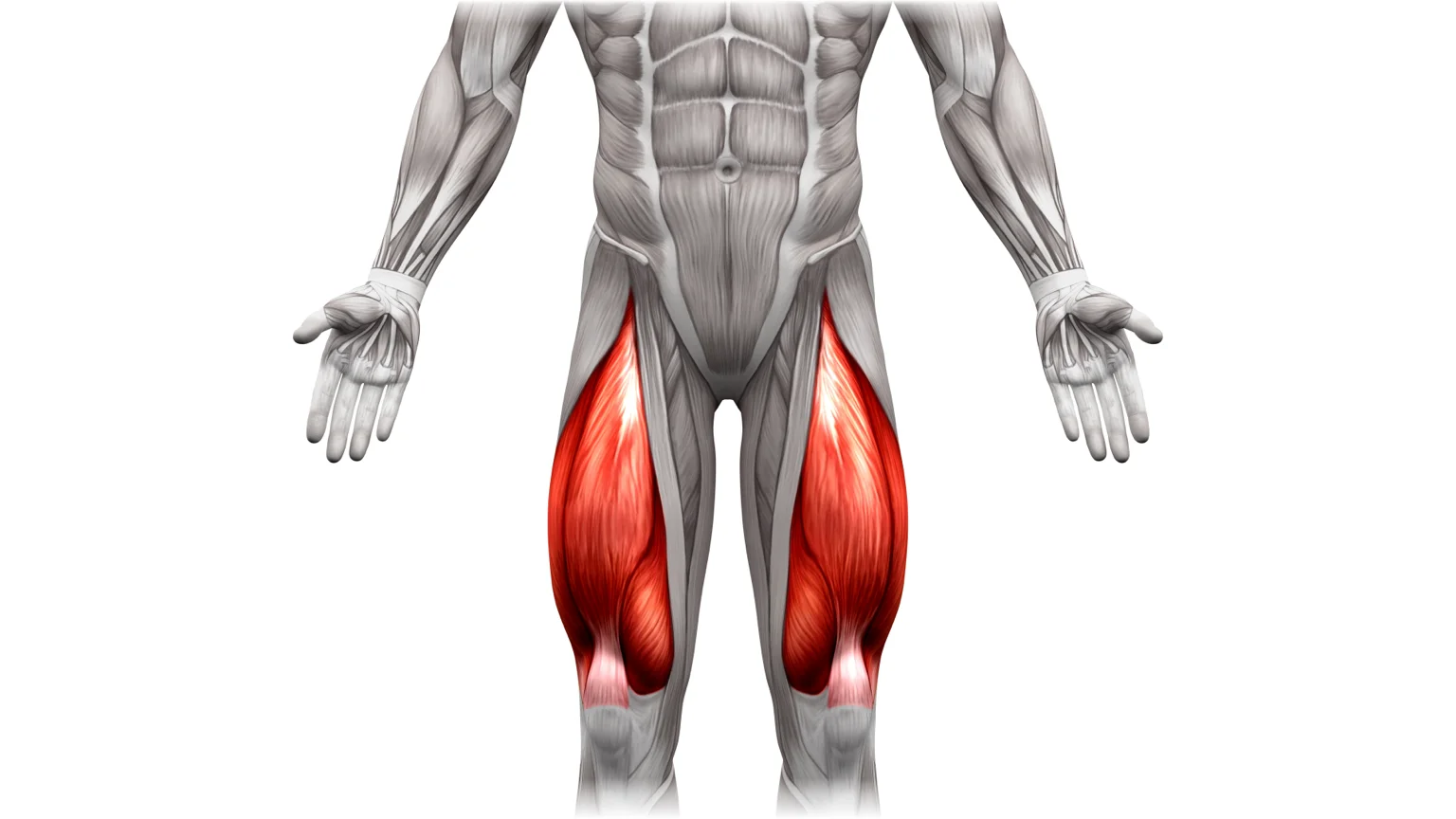
Your glutes are made up of three muscles in your buttock. They produce hip extension (moving your leg back), rotation and hip abduction (moving your leg out to the side), as well as provide stability to your upper body when you stand. Your glutes are key muscles in propelling your body forwards, jumping and heavy lifting.
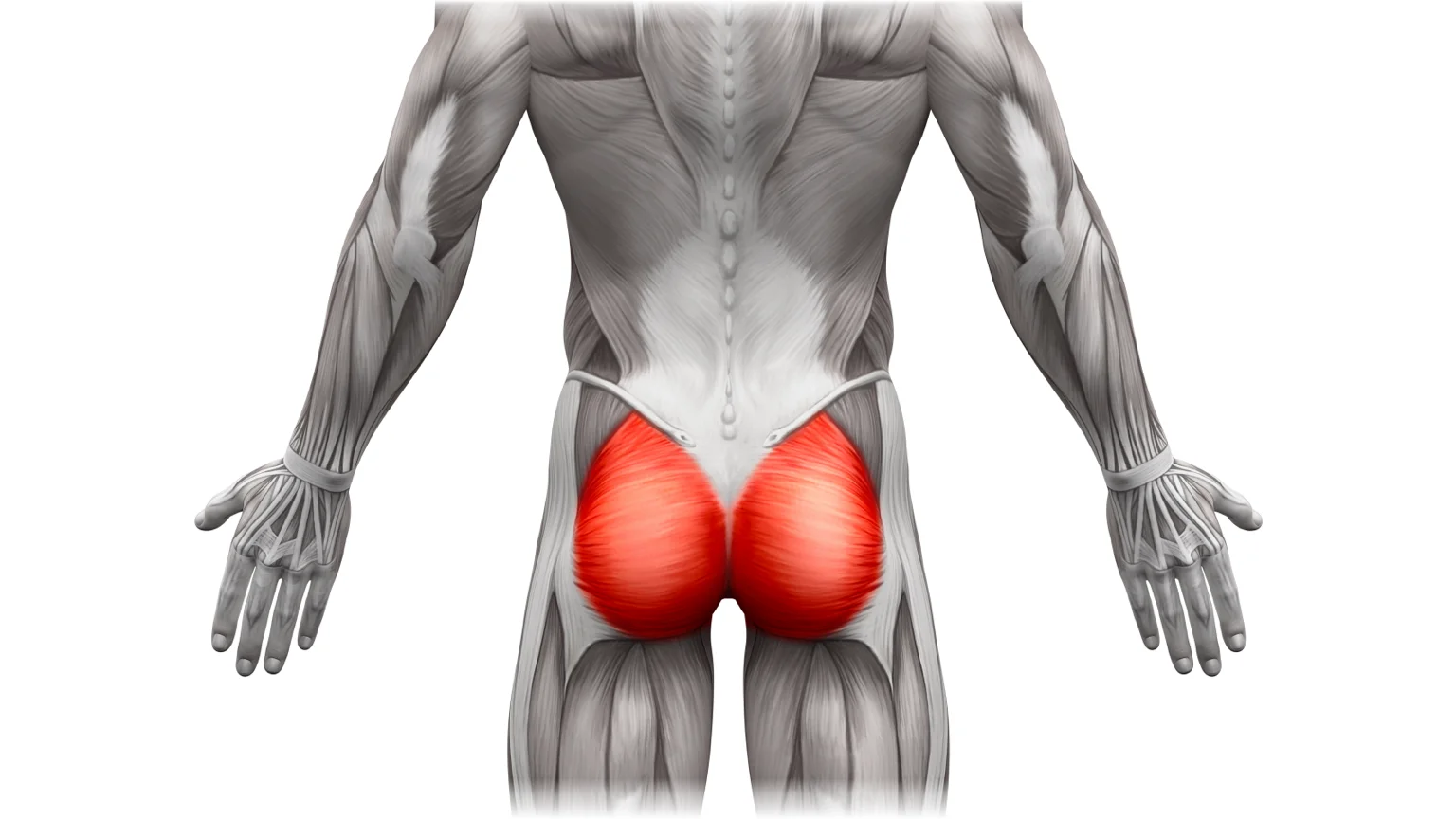
Your hamstrings are made up of three muscles – the biceps femoris, the semitendinosus and the semimembranosus. Together, these muscles allow your leg to bend about the knee and assist in hip extension. Strong hamstrings are beneficial in everyday activities like walking, running and jumping.
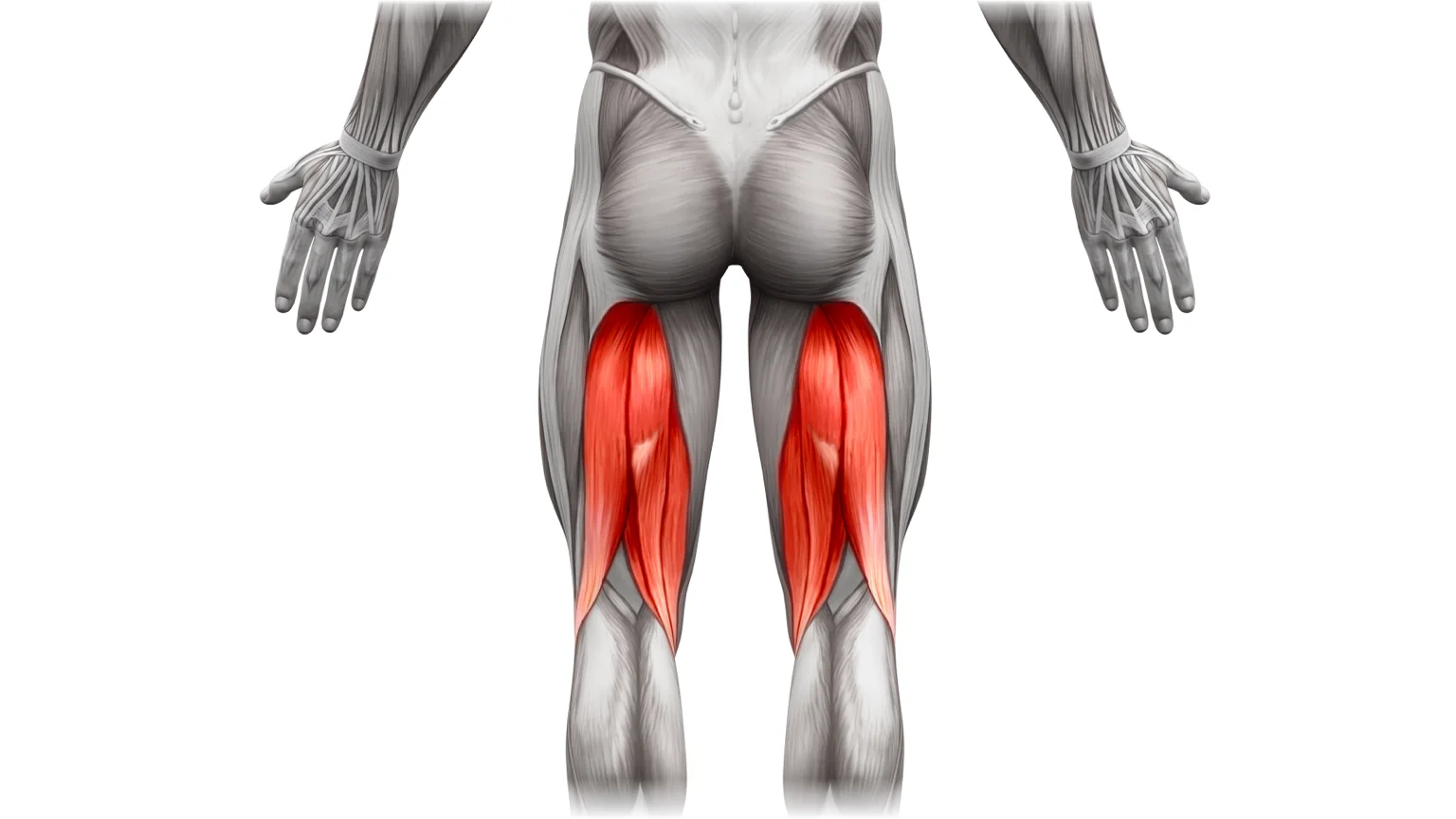
Some good at home exercises for your quads, hamstrings and glutes include:
Your calf muscles are in turn made up of the gastrocnemius and soleus muscles. These muscles are essential in walking, running and jumping and provide balance and stability. When you take the tiptoe position, your calf muscles contract to pull up your heels (pointing your foot downwards, i.e. plantar flexion), shifting your bodyweight onto the ball of your foot.

You can workout your calf muscles at home using calf raises.
Arm and shoulder muscles
Your biceps are the large muscles on the front of your upper arms. They are involved in lifting and pulling moves.
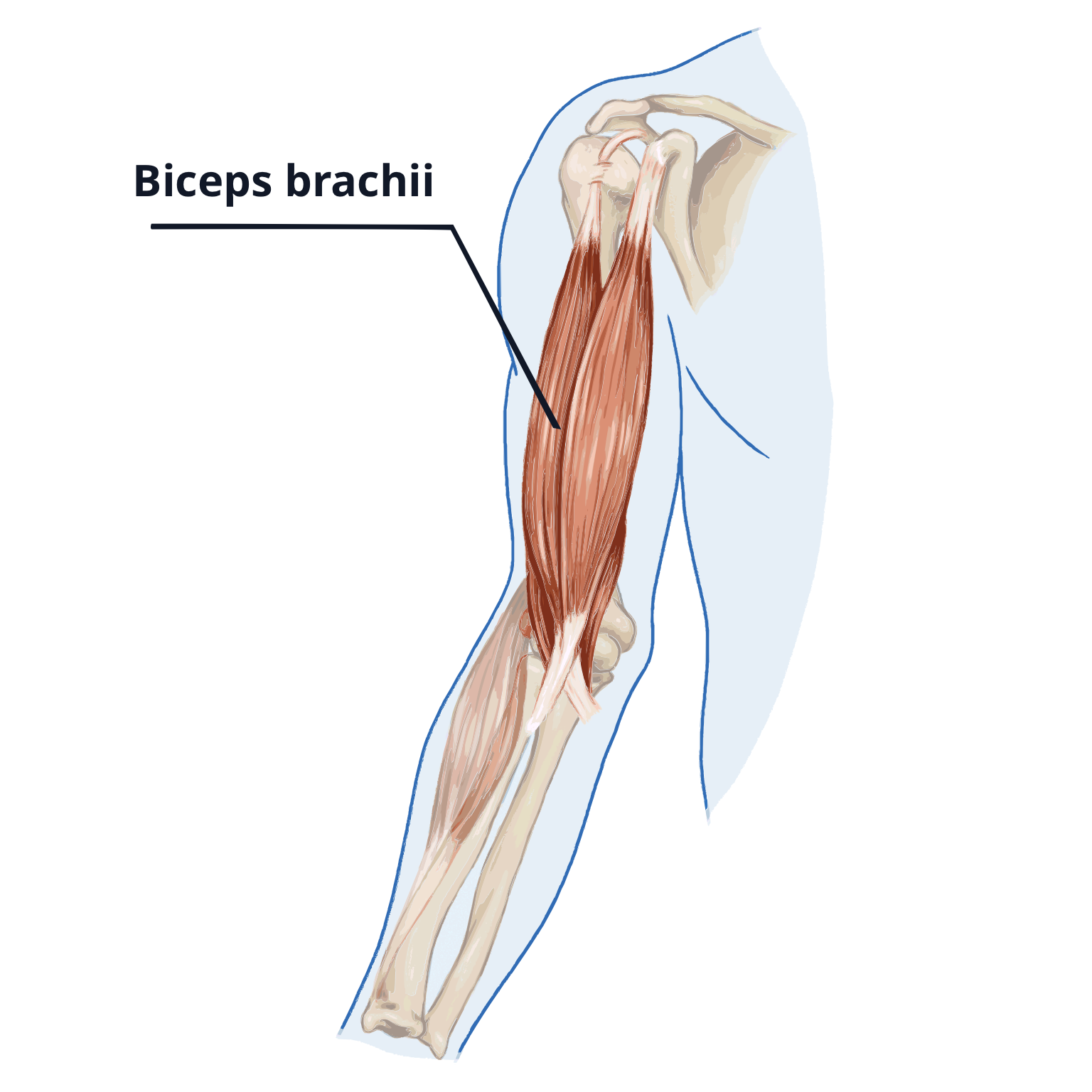
At home exercises for biceps:
Your triceps are at the back of your arm, and play a particular role in pushing movements (e.g. shoulder press). The triceps have three heads, known as the long head, the lateral head, and the medial head. The triceps are primarily responsible for the extension of the elbow joint, which allows the arm to straighten.

Good at home exercises for triceps:
Finally, your deltoids cover your should and are responsible for the rotation of your arms and lifting them up and/or out to the sides.
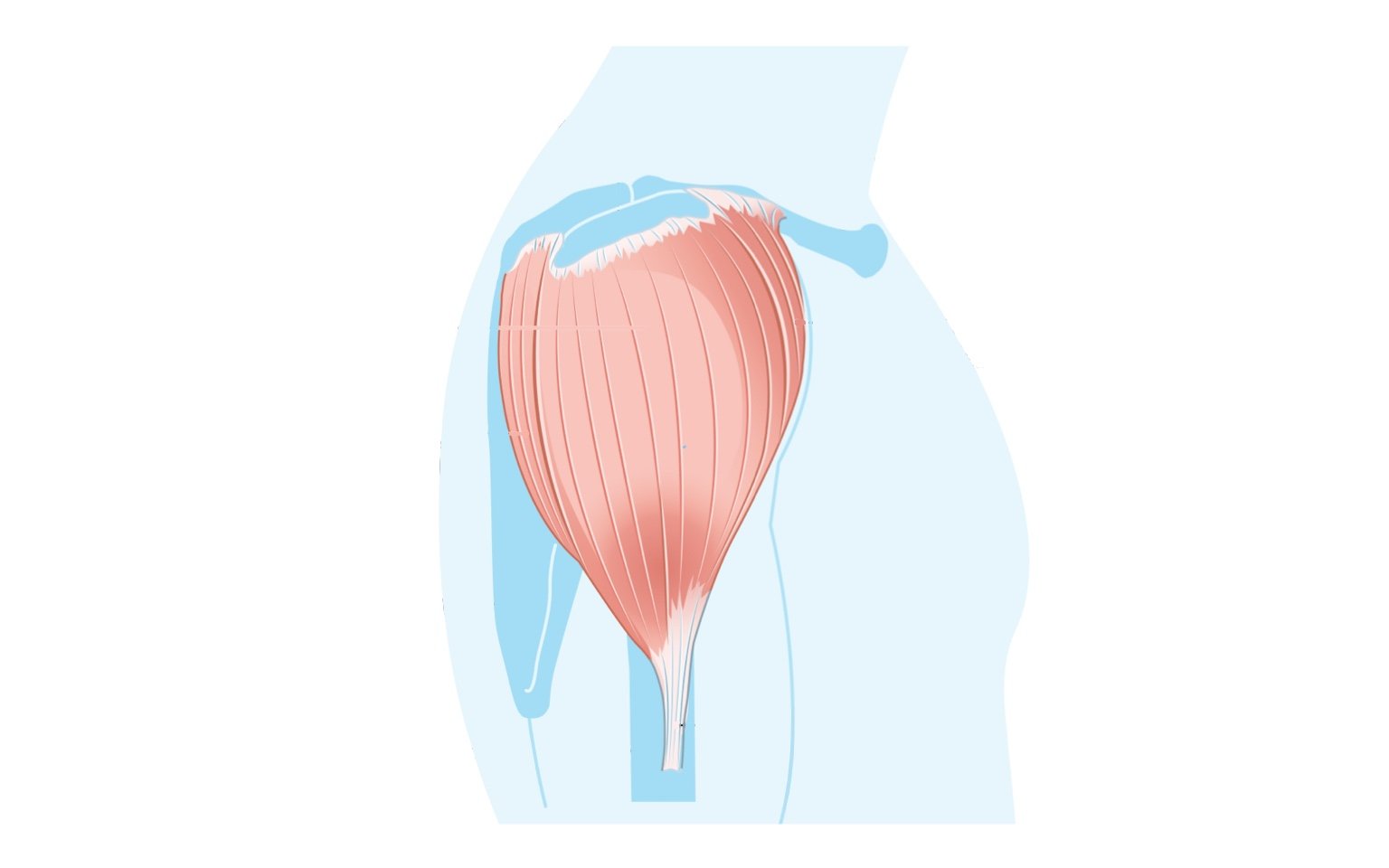
At home exercises for deltoids:
Planning Your Bodyweight At Home Routine
Each workout session in the Bodyweight At Home Routine takes approximately 20-30 minutes, making it easy to fit into a busy schedule.
This routine uses your own bodyweight for resistance, so there’s no need to any special equipment. This makes it perfect for at home workouts, or where you don’t have easy access to a gym.
So, how does this workout routine fit into your week?
The first important consideration is rest days. Because this is a full body workout, you need to leave at least one day of rest between workouts. This will give your muscles enough time to recover before you work them again.
How you choose to structure your week is flexible. Some people like to train during the week and keep their weekends free. For example:
- Monday – Full body workout
- Tuesday – Rest day
- Wednesday – Full body workout (upper body focus)
- Thursday – Rest day
- Friday – Full body workout (lower body focus)
- Saturday – Rest day
- Sunday – Rest day
We’ve selected exercises that target all your major muscle groups, including some core and abs exercises. We’ve included these at the end of your workouts, although you may prefer to do the exercises in a different order – totally fine!
The Beginner Bodyweight At Home Workout
Day 1 – Full Body
Repeat this routine 1-3 times depending on your ability:
- Bodyweight squats – 10-15 reps
- Push-ups – 5-10 reps
- Plank – Hold for 10-20 seconds
- Jumping jacks – 10-20 reps
- Bicycle crunches – 10-15 reps
Day 2 – Rest
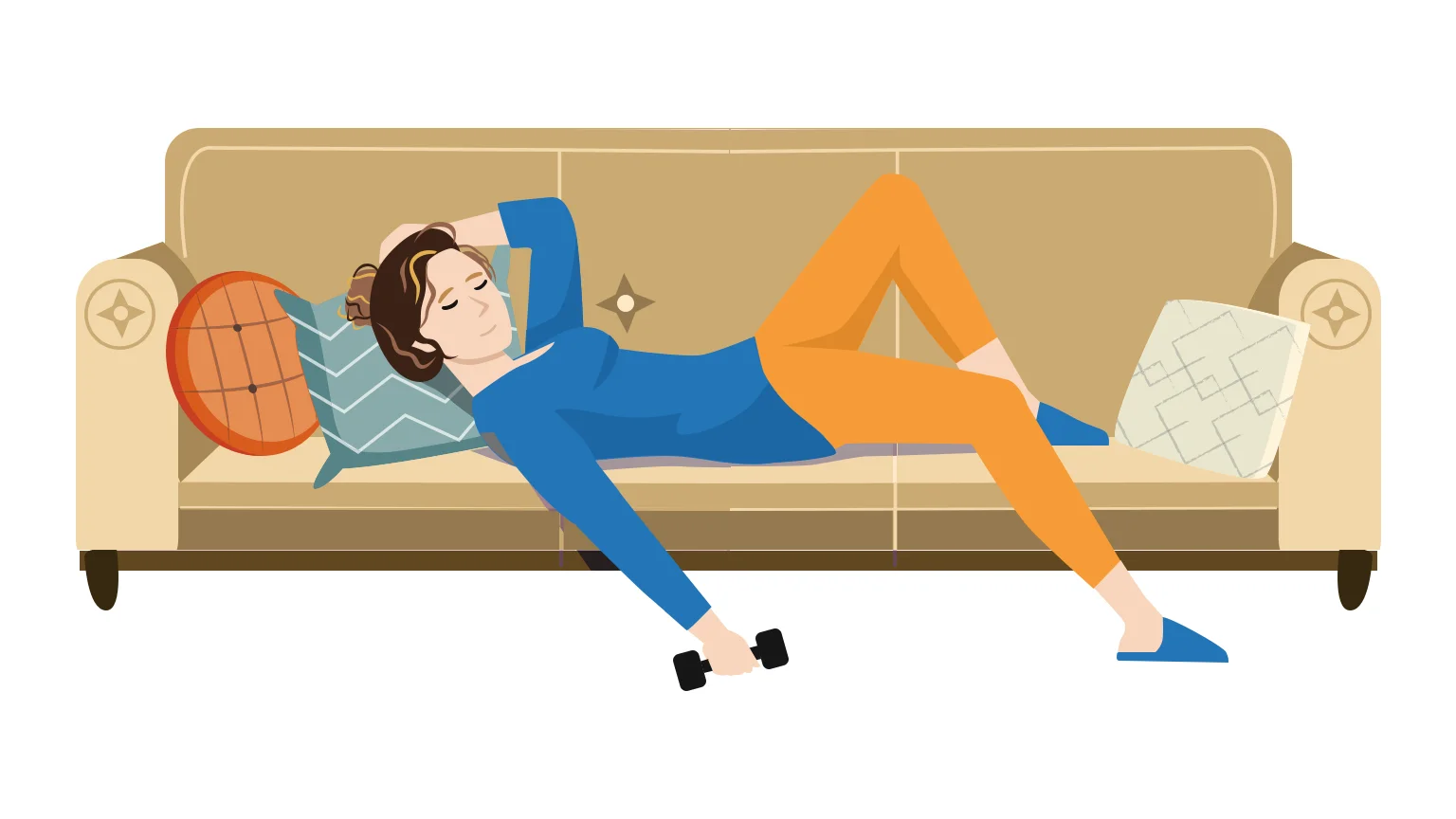
Day 3 – Upper Body Focus
Repeat this routine 1-3 times depending on your ability:
- Push-ups – 5-10 reps
- Plank – Hold for 10-20 seconds
- Chair dips – 10-15 reps
- Overhead tricep extensions – 10-15 reps
- Russian twists – 10-15 reps
Day 4 – Rest
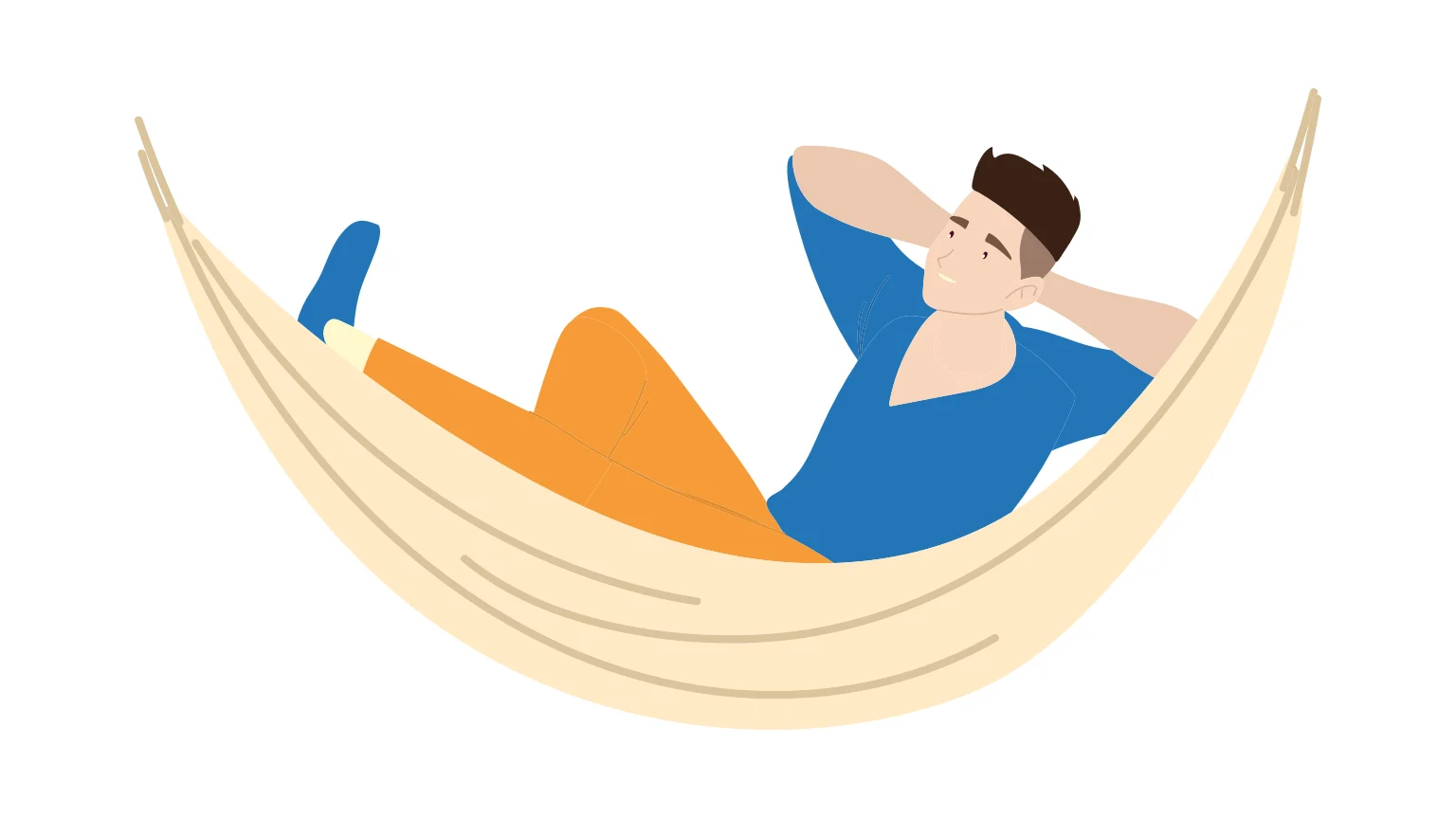
Day 5 – Lower Body Focus
Repeat this routine 1-3 times depending on your ability:
- Bodyweight squats – 10-15 reps
- Jump squats – 10-15 reps
- Reverse lunges – 10-15 each side
- Standing calf raises – 10-15 reps
- Bicycle crunches – 10-15 reps
Days 6 & 7 – Rest
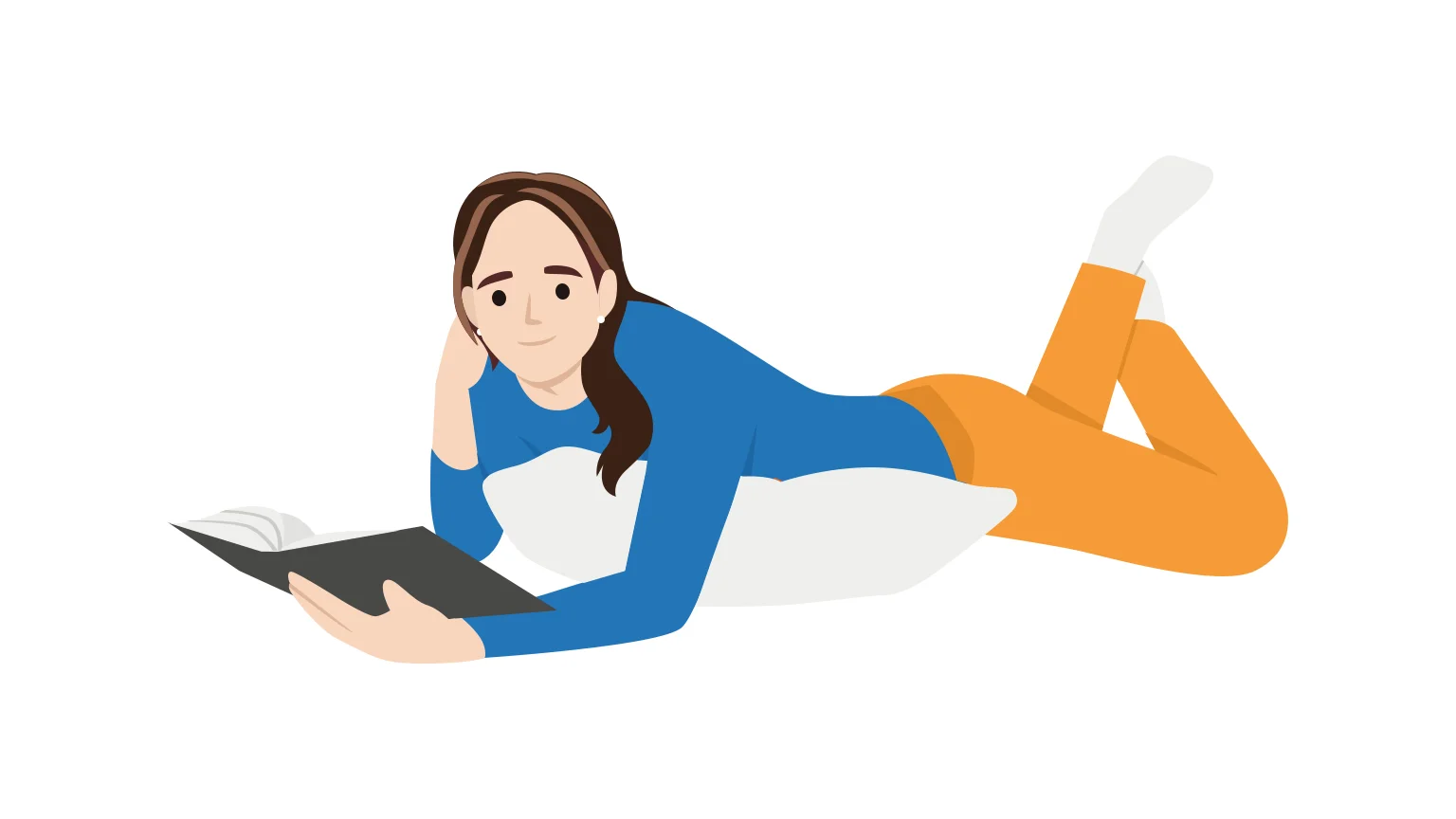
Tips
Warm up
Before you start any workout session, it’s important to warm up your muscles. This will raise your heart rate and cause increased blood flow to your muscles.
Start with some light cardio, such as jumping jacks or jogging in place for a few minutes.
Then do some dynamic stretching, targeting the muscles that you’ll be working during the workout.
Focus on proper form
When doing any exercise, maintaining proper form is the number one priority. If you are new to working out, you should pay extra attention to your form. Ensure you are exercises in a safe and effective way before you progress to a more intense workout.
Here are some tips for specific exercises:
- Squats – Your feet should be hip-width apart, with your toes pointing slightly outwards. Do not let your knees extend out in front of your toes. Maintain a neutral neck by looking directly forwards rather than looking down.
- Push-ups – Position your hands slightly wider than your shoulders. Your body should form a straight line from head to heel – avoid sagging or raising up your hips. Engage your abs to stabilize your body as you push.
- Reverse lunges – Lower your body so your knee is bent at a 90 degree angle. Your front knee should be directly above your ankle – not positioned forwards or backwards. Avoiding rushing into the lunge – take your time and focus on the proper form rather than speed.
Remember to check out the exercise guide for each exercise or consult a personal training if you want more advice!
